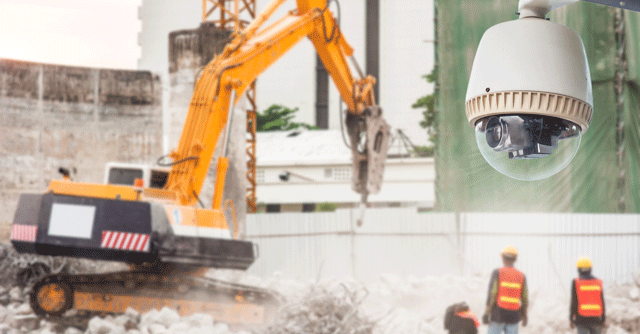
Construction firms turn to AI cameras, software to track projects across India


Construction firms in India are increasing dependence on artificial intelligence (AI) to improve the quality and efficiency of their projects in the country. Though deployments have been sporadic, industry executives say that the dependence on such technologies is allowing the sector to reduce wastage and pilferage of resources, track visibility on sites, and increase safety and efficiency of workers.
Firms involved in the construction of dams, roads, buildings and more belong to one of the most resource intensive sectors, and waste rates are high. Companies like Larsen & Toubro (L&T) and Tata Projects are deploying emerging technologies in order to arrest this waste and improve resource utilization.
For instance, L&T has started using image and video analytics to assess worker productivity at its plants and construction sites. “Our project sites, manufacturing bases, and more than 2.5 lakh workers in India are now digitally connected,” said Anup Sahay, head of the corporate strategy and special initiatives at L&T. “This has helped us during the pandemic to reach out and help our workforce better. 70-75% of the projects are using digital solutions which are AI-enabled,” he added.

Sahay said that the use of AI has led to faster turnaround time for transit mixers, which are large machines that are used to mix cement etc. In addition, AI enabled cameras allow the company to track when workers are not following proper safety protocols, like wearing the right shoes, jackets, helmets, face shields and more.
Such cameras use computer vision technology to detect the absence of personal protective equipment (PPE) on a worker on-site. The AI system will alert the designated personnel, like a project supervisor, when it detects such an aberration.
Further, Atul Rai, chief executive of Staqu, an AI firm that provides such software to various companies, noted that knowing how many vehicles have come to a construction site, and what raw materials they’re carrying is important information for firms, which can help avoid pilferage etc.

Rai provides an AI-driven software called Jarvis to Tata Projects, which allows the company to track movement of vehicles and raw materials, and for safety of workers. Image analytics through cameras allow the type of vehicles moving within their construction zones, and whether these vehicles are carrying the right kind of materials.
L&T, too, has similar implementations. The company uses automatic number plate recognition (ANPR) and vehicle detection models to receive materials at project sites without manual intervention.
While L&T and Tata Projects may be large companies, Rai pointed out that the construction sector largely operates with unorganized labor. “Usually they hire third-party contractors, and in many cases, a contractor charges for 30 laborers and only 15 people are working,” he said, adding that computer vision tools help solve this problem too.

The cameras on site use facial recognition software to recognize workers, and keep a count of how many workers are being employed. It allows companies to take attendance on-site and ensure that the promised number of workers are employed.
Staqu is also in talks with two other construction companies to deploy Jarvis right now. Rai didn’t disclose the names of these firms, since deal talks are underway right now. He is also pitching a firm for using the computer vision tool to track progress in construction of a dam.
“Use of AI/ML is now coming in factory construction, or commercial building and commercial construction,” said G. Sundararaman, senior vice president and head of automation solutions at Wipro Infrastructure Engineering. He added that it’s not used “effectively” by firms right now, but is growing in some application areas.

Though large enterprises have been early adopters of AI, Sundararaman said that smaller construction companies are also showing interest in using these technologies since the pandemic. “They realize that remote visibility, remote control, or remote understanding of the site performance can help them utilize their time and resources and grow the business,” he said.
Unlike other technologies though, the pandemic isn’t the key driver for the use of AI in construction. Instead, companies are recognizing the value these technologies can bring to the sector, experts said.
Sundararaman said that many projects are suffering from budget overruns. “The project delays are enormous and there is no transparent digital record that can pinpoint the weaknesses. These new technologies will help in bringing in that level of accountability to organizations,” he said.

